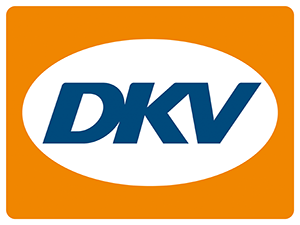Engagement Management: Should I stay or should I go?

One of the main questions for today’s HR work is how to retain employees in a war of talents and a rapidly changing work surrounding. High salaries only go so far – the new goal is to heighten employee engagement.
Defining Engagement (Management)
Definitions for employee engagement differ widely with most of them finding their common ground in the emotional connection an employee feels towards an organization which leads to a greater work effort. At DKV Mobility, the willingness to work hard and the connection felt towards a company are two different concepts:
_xl.png)
Comparing these two concepts leads to two realizations: First, these topics are similar in the way that they may have the same base (e.g. employee satisfaction) and second, the two concepts are not depending on each other. For example, an employee can be highly engaged in ones work and willing to go the extra mile but does not feel committed to the current company – The employee can imagine putting in the work effort someplace else. Therefore, a holistic engagement management manages both aspects but does not merge them.
Measuring Engagement
Neither engagement nor commitment can be directly observed, therefore companies need to measure it by asking our employees. DKV Mobility has decided to do so in anonymous surveys because the more quantitative, data-based approach increases feelings of comfort for the employees and time-efficiency for HR departments. In addition, anonymous feedback surveys provide further details and enable data-based engagement management.
DKV Mobility is using two different survey forms: (1) a general employee survey and (2) pulse checks.
Both measuring forms are combined so we regularly receive feedback on how to improve processes:
_xl.png)
All these surveys are sent to different target groups to prevent questionnaire fatigue, as that may lower participation rates and hence decrease the amount of feedback received. Therefore, DKV Mobility ensures a timely spread for pulse checks and closely monitors the target groups and potential participant overlaps.
Analyzing Engagement Data
Asking employees for feedback puts responsibility on you as a company and HR your department to provide answers to the employees and take actions. In order to do so, the provided feedback data – both quantitative and qualitative- need to be analyzed.
Quantitative Data Analysis
For DKV Mobility, quantitative data is feedback that comes in form of numbers. For example, the data sheet that is received after a questionnaire has been send out. Answers come in form of a 5-point-scale. In order to analyze these data, DKV Mobility is using a two-fold approach:
First, analyzing the data descriptively: That means calculating answering percentages for each item and allocating them in different graphs. This helps to understand which questions were marked best or lowest – what it does not tell is why that is the case. An easy example to understand that a high correlation does not equal causality: The correlation between the number of babies being born and the number of storks is high, but does that mean that storks bring babies?
In order to find those underlaying factors which drive engagement or commitment, DKV Mobility conduct a driver analysis. Some may have heard of correlation analyses as a driver analysis, but those data do not necessarily provide underlaying factors but rather connected factors. A regression analysis, however, is looking for the predictive power of an item subset and therefore provides insights on the underlaying factors.
_xl.png)
An example to clarify the difference:
Let’s assume that the commitment ratings in the last employee survey or pulse check were low but the engagement is high: People show great work effort but would not recommend the company as a workplace anymore. A big warning bell, especially in times in which talent is a rare good. After correlating the question subsets with your commitment score, one can see that a high correlation occurs for the subset “Team feeling”: whenever commitment is low, the team feeling is low as well. So, do people not like their colleagues anymore?
You conduct various team workshops which clarify that people like their colleagues and feel well in their teams. Now you decide to run a regression analysis to find commitment drivers resulting in high numbers for the item subset “workload”: People have a high workload which leaves them with little time for their tasks, high pressure and less time to collaborate with their colleagues. So, the underlying factor for both commitment and team feeling is workload. If this scenario was real, you may have invested high amounts of money in team buildings with little effect.
In summary, descriptive analyses are great to get a first glance at the data and formulate hypotheses for underlaying factors. In addition, these data are easy to understand and fast to create. Therefore, descriptive data are commonly used in result reports for managers and other stakeholders.
Regression analyses, in comparison, do need a little more knowledge on statistical data analyses and data preparation. This knowledge can either be found in an external partner or learned through online learning formats.
Qualitative Data Analysis
In addition to quantitative data, DKV Mobility also collects qualitative ones in form of comments, workshops and meetings.
_xl.png)
All in all, those three qualitative analyses provide DKV Mobility with a more profound base for the hypotheses derived from quantitative data analyses. Taking both analyses together clarifies the picture of the current strengths and development areas as a company and on org-unit level which simplifies the next step: deriving measures.
Deriving measures
Asking and receiving feedback comes with the responsibility to act upon it. We derive our measures directly from the qualitative and quantitative data analyses and the drivers found therein. Deriving measures can be supported by looking at the questions asked within that driver category: For example, one driver may be equity, which is operationalized by appreciation, fair pay and feeling as a full DKV Mobility-member. Measures may therefore be to check and communicate our fair pay efforts, communicate appreciation as a company but also include these topics into the DKV Mobility leadership development program.
All in all, Engagement Management is an important factor to attract and retain talents. Therefore, DKV Mobility conducts a continuous process of surveys and measures to ensure high levels of engagement and commitment. It also needs to consider the questions they want to ask: The best analysis does not give you great insights if the questions did not contain the information needed. Vice versa, the best data do not support you if choosing an analysis that does not fit.
Additionally, measures need to be derived from the feedback to gain or keep employee’s trust and heighten engagement and commitment. Finally, engagement management should be evaluated and updated regularly so improvements can be made.
